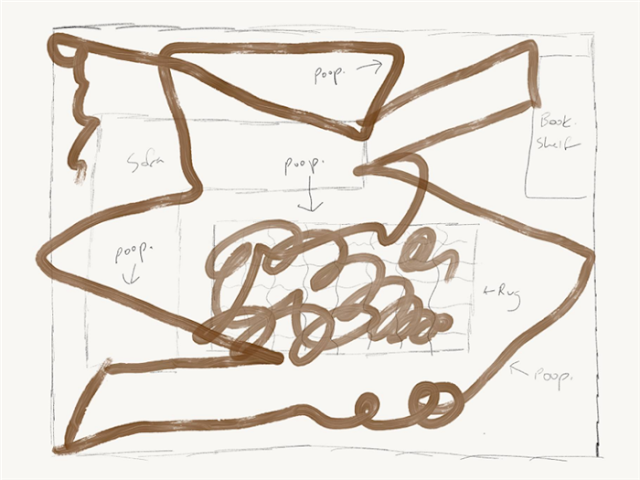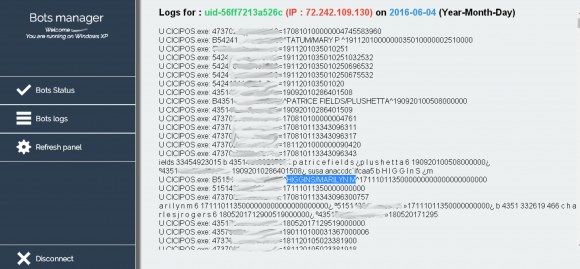Shared posts
Haiti's peanut producers oppose 500-tonne US donation
"Jet lightning"
While watching and photographing this year's Perseid Meteor Shower, something unexpected happened: a gigantic jet erupted from a nearby cloud. The whole thing was over in a flash -- it lasted less than a second -- but was fortunately captured by an already-recording digital camera. Gigantic jets are a rare form of lightning recognized formally only a few years ago. The featured high resolution color image, taken near the peak of Shikengkong mountain in China, may be the best image yet of this unusual phenomenon. The same event appears to have been captured simultaneously by another photographer, further away. The gigantic jet appears to start somewhere in a nearby thundercloud and extend upwards towards Earth's ionosphere. The nature of gigantic jets and their possible association with other types of Transient Luminous Events (TLEs) such as blue jets and red sprites remains an active topic of research.I have never heard of this before. You learn something every day. With a hat tip to the Crazy Cat Lady.
"Rare red sprite lightning captured by Stephen Hummel from the McDonald Observatory in Texas. It's estimated to be 30 miles tall."
AT&T eliminates $20 wireless plan, cuts data in half on $30 plan
PaulahmartinWho likes these people? Seriously, why even do this? It all sounds awful.
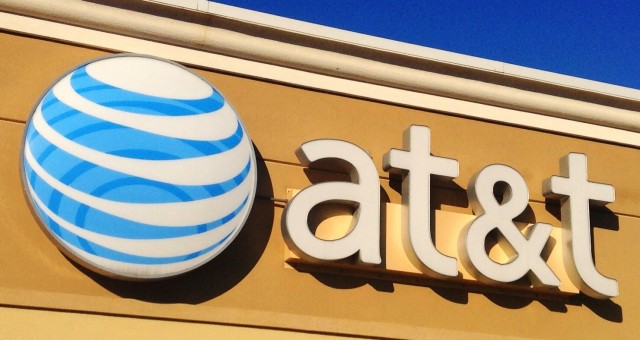
(credit: Mike Mozart)
AT&T's entry-level smartphone data plan that offers 300MB for $20 a month will no longer be available to new customers beginning August 21. Additionally, the current 2GB plan that costs $30 will be replaced by a $30 plan offering only 1GB. A new $40 plan will offer 3GB, while $60 will provide 6GB, replacing today's $50 5GB plan.
On the plus side for customers who buy the lowest-cost data plans, AT&T is changing its phone access charge to $20 a month per device. You need to add the data and device access charges together to get the monthly cost before miscellaneous fees. Currently, AT&T imposes a $25-per-month access charge on plans with 5GB or less and $15 on bigger plans. Going forward, the $20 charge will apply regardless of size, with some exceptions—two-year contracts will still have access charges of $40 a month.
These changes are part of a revamp of AT&T's Mobile Share Value plans. In some cases, the new data prices offer better value. For example, it will cost $90 to get 16GB, while today it costs $100 for 15GB. The dollar-per-gigabyte value gets better from there. While today you'd pay $175 for 25GB and $225 for 30GB, next week it will cost $110 for 25GB and $135 for 30GB. The plans come with mobile hotspot capability, rollover data, and unlimited talk and text.
Verizon has a plan to make the Android bloatware problem worse
Paulahmartinsharing for android amiguri
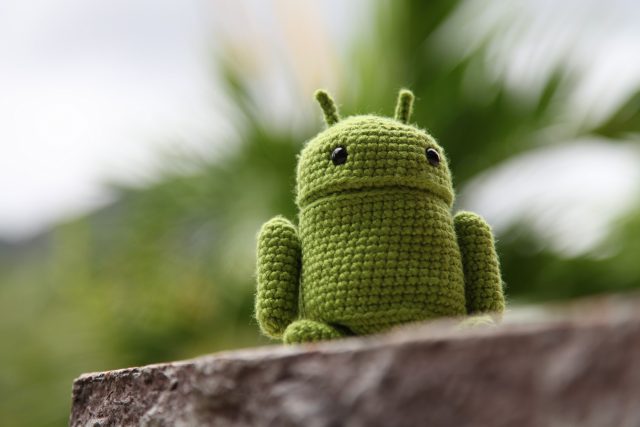
(credit: Kham Tran)
Verizon Wireless is reportedly trying to add more bloatware to Android phones by installing apps from other companies in exchange for payment. "The wireless carrier has offered to install big brands' apps on its subscribers' home screens, potentially delivering millions of downloads, according to agency executives who have considered making such deals for their clients," Advertising Age reported yesterday. "But that reach would come at a cost: Verizon was seeking between $1 and $2 for each device affected, executives said."
Bloatware has been a problem on Android phones for years, and this wouldn't be the first time Verizon Wireless was the culprit. But the company's latest moves sound like they have the potential to make things worse.
Verizon started pitching the app installs to retail and finance companies, among others, late last year, according to Advertising Age. Verizon only makes the offer for Android phones since carriers don't have the same access to Apple's iPhone.
New restaurant to open at former China Inn location
The latest: Road closures, evacuations in parts of St. Louis as rain soaks area
Paulahmartinthe best part about this pic is the duck that's like oh yeah i'm just enjoying this puddle around all the insanity
Apple Maps debacle is why Apple has a public beta program now
PaulahmartinSharing so you can see whatever that slime thing is back there
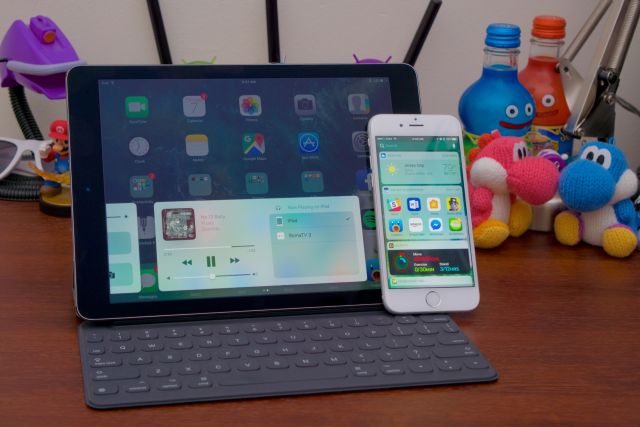
Enlarge / Devices running the iOS 10 beta. (credit: Andrew Cunningham)
Public betas are now a given for major and minor iOS and macOS releases for Apple, but that wasn't the case just a couple of years ago. The reason? Apple Maps, according to a Fast Company piece with quotes from Apple CEO Tim Cook, Software Engineering SVP Craig Federighi, and Internet Software and Services SVP Eddy Cue.
To recap, the Maps app in iOS switched from using Google's data to Apple's in iOS 6 back in 2012. The transition did not go well; the reception from the press and the public was bad enough that it prompted a rare apology and led to the departure of longtime iOS software head Scott Forstall.
"We made significant changes to all of our development processes because of [Maps]," Cue told Fast Company. "To all of us living in Cupertino, the maps for here were pretty darn good. Right? So [the problem] wasn’t obvious to us. We were never able to take it out to a large number of users to get that feedback. Now we do."
Newswire: Ice Cube is developing a hip-hop version of Hollywood Squares
PaulahmartinThis combines all things I love into one 30 minute program

For whatever reason (possibly the existentially terrifying nature of our modern society), old-fashioned game shows are really hot. ABC did those new Match Game and $100,000 Pyramid reboots, and now VH1 will join in on this reheated game show craze with another reboot of a reboot. This time it’s Hip Hop Squares, a hip-hop-styled take on Hollywood Squares (obviously) that MTV2 first tried to get off the ground in those apocalypse-obsessed days of 2012, when everything seemed like a good idea because we all thought we’d be dead in a few months. Of course, mankind survived, and much like the circular Mayan calendar, we’ve now come back around to Hip Hop Squares.
This new incarnation is being developed by Ice Cube and his Cube Vision production company, and a press release says that it’ll feature celebrities who must “match wits and test their pop culture ...
SUV catches fire in downtown St. Louis parking garage
PaulahmartinWalker?
Wearable maker Fitbit must face lawsuit over sleep-tracking claims
PaulahmartinMaybe I'll get 75c or a coupon or something

(credit: Fitbit)
A proposed class-action lawsuit accusing Fitbit of misrepresenting the ability of its wearable fitness products to track sleep can move forward, a federal judge has ruled.
The San Francisco federal lawsuit claims that Fitbit materially misrepresented on its packaging the ability of the Flex product to track users' hours slept, times woken up, and sleep quality. The suit alleges false advertising, unfair trade practices, fraud, and a host of other claims.
US District Judge James Donato did not rule on the merits of the case but instead refused to toss the lawsuit as Fitbit had wanted. Now Fitbit, which claimed the allegations were based on "bad science," according to the judge, must mount another defense to the allegations. The case could still be dismissed at a later stage, and it might also go to a trial or settle.
Newt Broke Politics—Now He Wants Back In
PaulahmartinThis is an interesting retrospective on what exactly makes Newt Gingrich a terrible person
Frenzied speculation about a presidential nominee’s V.P. choice has always struck me as overrated. It’s like scrambling to learn what a president will say in his State of the Union address: You’re going to know soon enough. Why the hysteria?
That said, the fact that Newt Gingrich made it to the final round of Celebrity White House Apprentice—and that, even if he does lose out to Indiana Governor Mike Pence, he’s said to be under consideration for a top national-security position—leaves me breathless with awe and wonder. Whatever job the former speaker ultimately snags, that he is being considered for any crucial government post pretty much encapsulates the absurdity of these political times.
To clarify: The great irony here is not that Donald Trump may be trolling for gravitas by snuggling up to a guy who himself is the clown prince of politics. Sure, some consider it noteworthy that, in 1997, Gingrich became the first speaker reprimanded and sanctioned by the House (on a 395-to-28 vote) for an ethics violation. (He had claimed tax-exempt status for a college course run for political purposes then lied to investigators to cover his butt.) Admittedly, this was no small achievement. Partisanship notwithstanding, it’s exceedingly tough to get House members to spank one of their own. Still, these days the American public regards pretty much all politicians as ethically shady. So why pick on Newt?
It is also true that, somewhere along the way, Americans learned that, even as Gingrich gleefully presided over the Clinton-Lewinsky scandal and impeachment, he had been catting around on his second wife with a much younger woman (a junior aide to another House Republican), who, after their six years of semi-public sneaking around, became the third Mrs. Gingrich. (To be fair, Newt might have stuck with his second wife a bit longer if she had honored his reported entreaties for an open marriage.) But Gingrich explained all that during his 2012 presidential run, chalking the whole unfortunate mess up to overwork, “partially driven by how passionately I felt about this country.” Patriotism made him do it. Can’t fault a guy for that.
Also, if someone were really looking to nitpick, it is pretty remarkable that, a mere three years after Gingrich orchestrated the 1994 Republican Revolution, granting the GOP its first House majority in 40 years, his own troops nonetheless tried to depose him for being such a disastrous leader. It wasn’t until after the party got its clock cleaned in the 1998 midterms, however, that members finally managed to pry the gavel from Newt’s hands. On his way down, Gingrich sniffed that he had no interest in leading a bunch of “cannibals.”
All that and more (remember his tantrum over getting a bad seat on Air Force One?) helped make Gingrich a magnificent comic figure of the waning 20th century—and, come to think of it, a pretty good playmate for Trump, characterologically speaking. But what boggles the mind about Newt’s latest moment is not his personal foibles or his ethical slips or even his political ham-fistedness. The truly great irony is that, more than any other lawmaker of our times, Newt is the guy who screwed up Congress, turning it into the dysfunctional circus it is today. And now he is looking to slouch back into power on a wave of public rage over that very dysfunction.
How did Gingrich break the House? Let us count just some of the ways. For starters, there was his elevation of legislative obstructionism to a central political strategy. Long before there was the Ted Cruz government shutdown of 2013, there were the Gingrich shutdowns of 1995 and 1996, the latter of which lasted three weeks and still stands as the longest in U.S. history. Not that anyone should have been surprised. Such chaos was all part of Gingrich’s long-standing quest to undermine public confidence in government. As former Democratic whip Steny Hoyer noted in a 2009 interview with The Washington Post:
Gingrich’s proposition, and maybe accurately, was that as long as [Republican leaders] and our party cooperate with Democrats and get 20 or 30 percent of what we want and they get to say they solved the problem and had a bipartisan bill, there’s no incentive for the American people to change leadership. You have to confront, delay, and undermine and impose failure in order to move the public. To some degree, he was proven right in 1994.
In his zeal to cripple Democrats, Gingrich poisoned the public against the entire American political system. As a congressional scholar, Norm Ornstein has noted, Gingrich labored “to create a climate in which Americans would be so disgusted with Congress that they would say, collectively, ‘Anything would be better than this.’” And so, he launched “a long campaign to delegitimize Congress, politics, and politicians, and to provoke the Democratic majority to overreact, thereby alienating even moderate Republicans in Congress and uniting them against the evil Democrats.” (And make no mistake, Gingrich was very, very good at demonizing the opposition. As he’d lecture colleagues way back in 1988: “When in doubt, Democrats lie.”)
Next up: Gingrich’s acceleration of congressional money grubbing. As Lawrence Lessig, a Harvard Law professor and campaign-finance-reform obsessive, charged during Newt’s 2012 presidential run: “The transformation to this ‘Fundraising Congress’ began in 1993. Newt Gingrich was its leader.” Having ridden to power on a flood of money, Gingrich had every intention of staying there, noted Lessig. “The four years between 1994 and 1998, Republican candidates and party committees would raise over $1 billion. Never before had a party come anywhere close to raising that amount of money, because never before had any party’s leaders so effectively focused the energy of their members on this single task: fundraising.”
Then, of course, there was Gingrich’s push to nationalize congressional elections, making the qualities of any individual candidate less important than voters’ devotion to the overall party (or at least their antipathy toward the opposing team). And let us not forget Gingrich’s shortening of the congressional work “week” to three days. (Do not get House conservatives started on the insanity of the current schedule!) And the explosion of earmarks during his reign.
Nor can we forget the centralization of power. Once in leadership, Gingrich took multiple steps to reduce the authority of chairmen, committees, caucuses, and pretty much anyone else who might stand in his way. There has been much hubbub this year about Paul Ryan’s attempts to restore “regular order” to the House, giving rank-and-file members and committee chairman more of a say in legislation. You know who blew up regular order to begin with? I’ll give you two guesses.
As Bruce Bartlett, a former Reagan and Bush I official, wrote in 2011 (forgive the long quote; it’s worth it):
Because Mr. Gingrich does know more than most politicians, the main obstacles to his grandiose schemes have always been Congress’s professional staff members, many among the leading authorities anywhere in their areas of expertise.
To remove this obstacle, Mr. Gingrich did everything in his power to dismantle Congressional institutions that employed people with the knowledge, training and experience to know a harebrained idea when they saw it. When he became speaker in 1995, Mr. Gingrich moved quickly to slash the budgets and staff of the House committees, which employed thousands of professionals with long and deep institutional memories …
In addition to decimating committee budgets, he also abolished two really useful Congressional agencies, the Office of Technology Assessment and the Advisory Commission on Intergovernmental Relations. The former brought high-level scientific expertise to bear on legislative issues and the latter gave state and local governments an important voice in Congressional deliberations.
The amount of money involved was trivial even in terms of Congress’s budget. Mr. Gingrich’s real purpose was to centralize power in the speaker’s office, which was staffed with young right-wing zealots who followed his orders without question. Lacking the staff resources to challenge Mr. Gingrich, the committees could offer no resistance and his agenda was simply rubber-stamped.
Had enough yet? Because I could go on literally for thousands more words.
In 1994, on the brink of his revolution, Gingrich, with characteristic humility, proclaimed himself “a transformational figure.” It turns out he was exactly right. Just not in a good way.
Here’s hoping that neither Trump—nor any future nominee or voter—is actually crazy enough to let Gingrich anywhere near the levers of power again.
Florida woman dies after stepping off edge at Grand Canyon
PaulahmartinI don't need to read shit like this
Respond to disasters with money, not goods
I'm sure one reason disaster areas are flooded with goods is that companies can donate merchandise that isn't selling, then deduct the value from their taxes as a charitable contribution.What advice do you have for the general public who want to help in the aftermath of the Orlando tragedy (or other crisis events)?
Do not donate your used items, just give money and in this case blood When the Fort McMurray fire happened they were overloaded with used items that they had no use for and tons of warehouses in Edmonton are filled with people's used crap...
After the earthquakes in Christchurch, New Zealand, in 2011, the Red Cross actually published ads in newspapers giving guidance about this. They said the reason they wanted money, rather than goods, was threefold: 1) Folks tended to give the wrong things, or too many of one thing and not enough of others (so, in Christchurch, lots and lots of tinned baked beans). If they give money instead the Red Cross can just buy the stuff needed in the right amounts; 2) All the wrong stuff that people give which can't be used has to be either (a) stored or (b) disposed of. Both cost money that could be better spent helping those affected by the disaster; 3) A flood of stuff from outside the disaster area destroys the local economy just when they need help the most. For example, my sister in law runs a corner store in Christchurch. Her family had opened that store every single day, including Christmas and Easter, for over 40 years. After the earthquakes so much food was donated that they ended up closing the store for three months as they had no customers...
Providing free goods and services damages the local economy. Ex-President Clinton admitted that the trade policy his administration imposed on Haiti destroyed Haitian farmers. Small farmers could not compete with U.S. agribusiness and went out of business. Now Haitians rely on aid to buy imported food.
In an article about aid to Africa : "Even what may appear as a benign intervention on the surface can have damning consequences. Say there is a mosquito-net maker in small-town Africa. Say he employs 10 people who together manufacture 500 nets a week. Typically, these 10 employees support upward of 15 relatives each. A Western government-inspired program generously supplies the affected region with 100,000 free mosquito nets. This promptly puts the mosquito net manufacturer out of business, and now his 10 employees can no longer support their 150 dependents. In a couple of years, most of the donated nets will be torn and useless, but now there is no mosquito net maker to go to. They'll have to get more aid. And African governments once again get to abdicate their responsibilities. In a similar vein has been the approach to food aid, which historically has done little to support African farmers. Under the auspices of the U.S. Food for Peace program, each year millions of dollars are used to buy American-grown food that has to then be shipped across oceans. One wonders how a system of flooding foreign markets with American food, which puts local farmers out of business, actually helps better Africa. A better strategy would be to use aid money to buy food from farmers within the country, and then distribute that food to the local citizens in need."
Slicing Into a Point-of-Sale Botnet
Last week, KrebsOnSecurity broke the news of an ongoing credit card breach involving CiCi’s Pizza, a restaurant chain in the United States with more than 500 locations. What follows is an exclusive look at a point-of-sale botnet that appears to have enslaved dozens of hacked payment terminals inside of CiCi’s locations that are being relieved of customer credit card data in real time.
Over the weekend, I heard from a source who said that since November 2015 he’s been tracking a collection of hacked cash registers. This point-of-sale botnet currently includes more than 100 infected systems, and according to the administrative panel for this crime machine at least half of the compromised systems are running a malicious Microsoft Windows process called cicipos.exe.
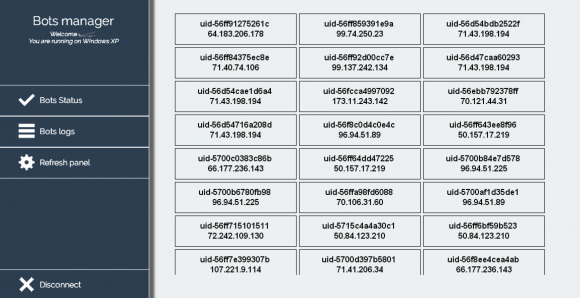
This admin panel shows the Internet address of a number of infected point-of-sale devices as of June 4, 2016. Many of these appear to be at Cici’s Pizza locations.
KrebsOnSecurity has not been able to conclusively tie the botnet to CiCi’s. Neither CiCi’s nor its outside public relations firm have responded to multiple requests for comment. However, the control panel for this botnet includes the full credit card number and name attached to the card, and several individuals whose names appeared in the botnet control panel confirmed having eaten at CiCi’s Pizza locations on the same date that their credit card data was siphoned by this botnet.
Among those was Richard Higgins of Prattville, Ala., whose card data was recorded in the botnet logs on June 4, 2016. Reached via phone, Higgins confirmed that he used his debit card to pay for a meal he and his family enjoyed at a CiCi’s location in Prattville on that same date.
An analysis of the botnet data reveals more than 100 distinct infected systems scattered across the country. However, the panel only displayed hacked systems that were presently reachable online, so the actual number of infected systems may be larger.
Most of the hacked cash registers map back to dynamic Internet addresses assigned by broadband Internet service providers, and those addresses provide little useful information about the owners of the infected systems — other than offering a general idea of the city and state tied to each address.
For example, the Internet address of the compromised point-of-sale system that stole Mr. Higgins’ card data is 72.242.109.130, which maps back to an Earthlink system in a pool of IP addresses managed out of Montgomery, Ala.
Many of the botnet logs include brief notes or messages apparently left by CiCi’s employees for other employees. Most of these messages concern banal details about an employee’s shift, or issues that need to be addressed when the next employee shift comes in to work.
In total, there are more than 1.2 million unique credit and debit card numbers recorded in the botnet logs seen by this reporter. However, the total number of card accounts harvested by the cybercrooks in charge of this crime machine is probably far greater. That’s because the botnet logs go back to early April 2016, but it appears that someone reset and/or cleared those records prior to that date.
Only about half of the 1.2 million stolen accounts appear to have been taken from compromised CiCi’s locations. The majority of the other Internet addresses that appear in the bot logs could not be traced back to specific establishments. Others seem to be tied to individual businesses, including a cinema in Wallingford, Ct., a pizza establishment in Chicago (the famous Lou Malnatis), a hotel in Pennsylvania, and a restaurant at a Holiday Inn hotel in Washington, D.C.
This particular point-of-sale botnet looks to be powered by Punkey, a POS malware strain first detailed last year by researchers at Trustwave Spiderlabs. According to Trustwave, Punkey includes a component that records keystrokes on the infected device, which may explain why short notes left by CiCi’s employees show up frequently in the bot logs alongside credit card data.
Although CiCi’s has remained silent so far, the company’s main point-of-sale service provider — Clearwater, Fla.-based Datapoint POS — told KrebsOnSecurity last week that the hackers behind this botnet used social engineering to trick employees into installing the malware, and that the breach impacted multiple other point-of-sale providers.
“All of these attacks have been traced to social engineering/Team Viewer breaches because stores from SEVERAL POS vendors let supposed techs in to conduct ‘support,'” said Stephen P. Warne, vice president of service and support, in an email to this author. “Nothing to do with any of our support mechanisms which are highly restricted and well within PCI Compliance.”
Point-of-sale based malware has driven most of the credit card breaches over the past two years, including intrusions at Target and Home Depot, as well as breaches at a slew of point-of-sale vendors. The malware usually is installed via hacked remote administration tools. Once the attackers have their malware loaded onto the point-of-sale devices, they can remotely capture data from each card swiped at that cash register.
Thieves can then sell the data to crooks who specialize in encoding the stolen data onto any card with a magnetic stripe, and using the cards to buy gift cards and high-priced goods from big-box stores like Target and Best Buy.
Readers should remember that they’re not liable for fraudulent charges on their credit or debit cards, but they still have to report the phony transactions. There is no substitute for keeping a close eye on your card statements. Also, consider using credit cards instead of debit cards; having your checking account emptied of cash while your bank sorts out the situation can be a hassle and lead to secondary problems (bounced checks, for instance).
Stanley Cup Final starts Monday, potential ‘Ninja Warrior’ conflict
PaulahmartinNOOOOOOOO unless my team is in it but they won't be
The Tampa Bay Lightning and the San Jose Sharks are poised to close our their respective series in the next 48 hours. Or, perhaps, have the conference finals roll to a Game 7. Either way, the winners will have a relatively quick turnaround, as the NHL’s championship round begins on Monday.
The NHL announced that the 2016 Stanley Cup Final starts on Monday, a.k.a. May 30 a.k.a. Memorial Day a.k.a. ‘sorry we just ruined your beach plans, everyone.’
Media Day for the Final will be held Sunday in either Pittsburgh, San Jose or St. Louis, depending on who advances.
The start time for every game of the Final will be 8 p.m. ET, on NBC Sports Group and CBC and TVA on Canada.
2016 STANLEY CUP FINAL SCHEDULE
(all start times 8 p.m., ET)
Game 1 - Monday, May 30
Game 2 - Wednesday, June 1
Game 3 - Saturday, June 4
Game 4 - Monday, June 6
Game 5* - Thursday, June 9
Game 6* - Sunday, June 12
Game 7* - Wednesday, June 15
Your eyes don’t deceive you: That’s a two-day break between games from Game 2 to Game 3 and then beginning after Game 4, pushing this thing into the middle of June, potentially.
According to our own ginger ninja Sean Leahy, NBC is airing the highly anticipated premiere of “America Ninja Warrior” on June 1. NBC.com indicates that Game 1 of the Final is on NBC on Monday night. Are Games 2 and 3 of the Stanley Cup Final being shifted to NBCSN before shifting back to the main network?
A spokesperson for NBC wouldn't confirm, saying that the TV schedule will be announced when the Final is set.
NBC has shifted the Stanley Cup Final to cable for the last few seasons to give NBCSN some monster ratings. Last year, NBC had the first two games and NBCSN had Games 3 and 4, for example. But it would be a little odd to start it on NBC for one game and then shift to cable, even if it's not without precedent: Game 1 in 2013 was on NBC, and moved to NBCSN for the next two.
--
Greg Wyshynski is a writer for Yahoo Sports. Contact him at puckdaddyblog@yahoo.com or find him on Twitter. His book, TAKE YOUR EYE OFF THE PUCK, is available on Amazon and wherever books are sold.
MORE FROM YAHOO HOCKEY
Maplewood tightens liquor laws to keep servers covered
PaulahmartinIt seems really silly to me that it's ok for women to dress scantily while we order beer and wings but if there is a nipple OH MY GOD NO.
Judge to decide if death-row inmates in Louisiana need air conditioning
PaulahmartinThey probably don't need food either we are just going to kill them so
Baby bison dies after Yellowstone tourists put it in their car because it looked cold
Paulahmartinwhat in the world
Huge Bernie Sanders Rally in California
Paulahmartinthis is the kind of thing that just cracks me up
